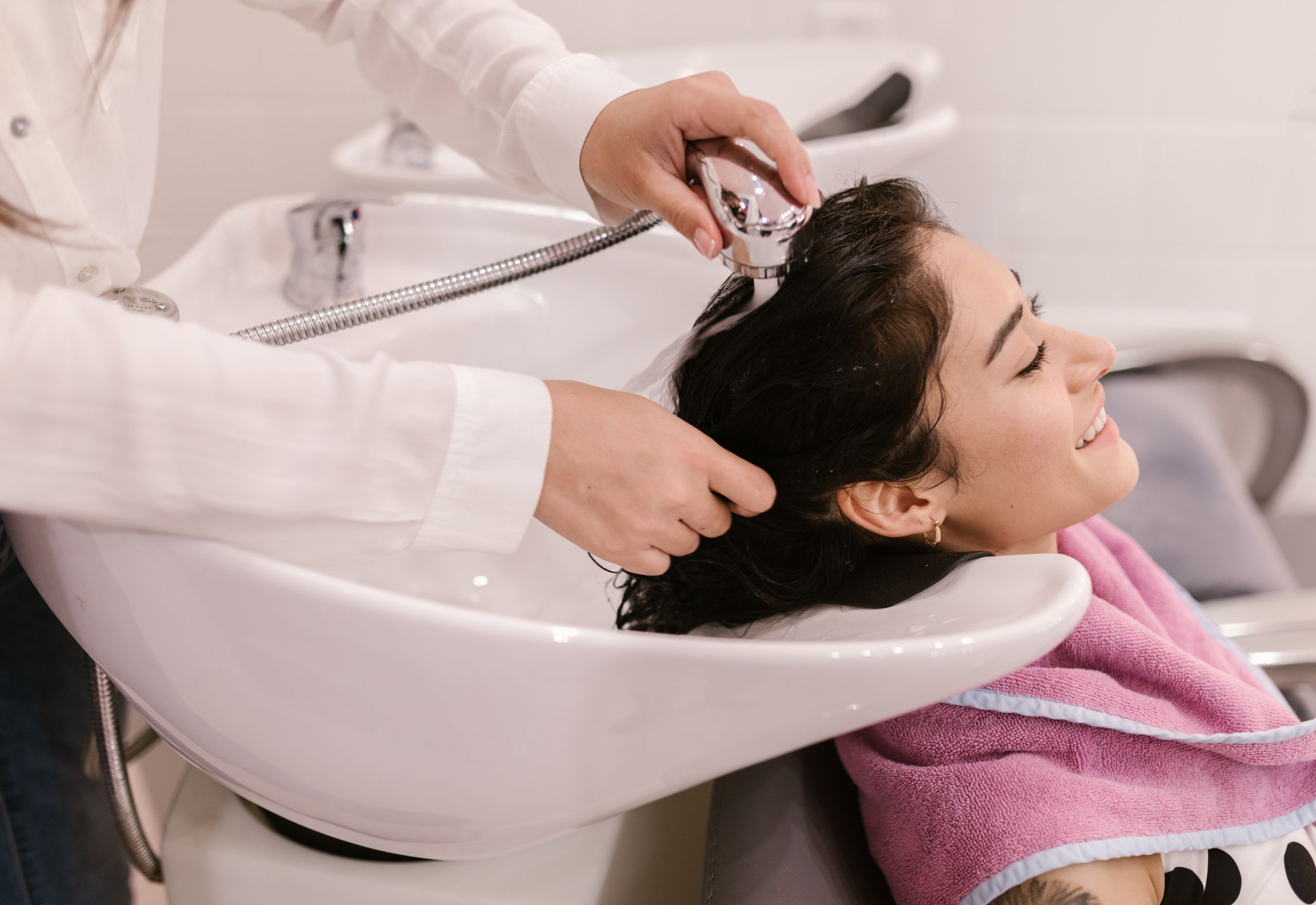Dermarolling for hair regrowth is a way to treat the scalp and is also known as microneedling. It is a roller with small needles that creates microinjuries. Dermarolling was initially developed in dermatology for rejuvenation of the skin and it has been successfully employed for the stimulation of hair density.
In research terms, dermarolling, when done properly, increases blood flow, increases growth factors, and increases the absorption of topical products in the scalp and hair loss products. Learning how to use a dermaroller for hair loss is a relatively simple, non-surgical method to treat early hair loss alongside an overall hair restoration program.
What is Dermarolling and How Does It Work for Hair Regrowth
Dermarolling is a very small handheld device consisting of a roller head with very fine medical-grade needles. It was first developed as a means of skin rejuvenation, but is becoming more popular in the world of scalp care and hair restoration plans.
When dermarolling is performed correctly for hair regrowth, it works by way of:
1: Micro-injury response: Small punctures initiate your body’s healing process, which cues the release of growth factors.
2: Improved blood circulation: Better circulation will improve the delivery of oxygen and nutrients to your hair follicles.
3: Collagen production: Collagen will help provide strength and support to the structure of the hair follicle.
4: Improved absorption: With dermarolling, you will see improved absorption when using topical solutions (like minoxidil) into the lower layers of the scalp.
So, is dermarolling useful for hair growth? The research does say that it improves thickness and density over time if done correctly.
Also Read: Scalp Detox: Does It Really Help With Hair Growth?
How to Perform Dermarolling on the scalp
Knowing how to use a dermaroller for hair and scalp is important. Not only can poor technique cause damage, but proper technique and some good hygiene will enhance your results. While you can dermaroll at home or in-office at a clinic, you’ll want to understand the basic principles of dermarolling and best practices to ensure you’re safe and effective.
At-home Dermarolling:
Needle length: 0.5mm-1.5 mm is appropriate for the scalp.
Frequency: 0.5mm dermarolling: once per week; 1.0 mm and higher: every 2-3 weeks.
Below are the instructions to follow for at-home dermarolling:
1: Disinfect your dermaroller with isopropyl alcohol.
2: Wash your scalp thoroughly.
3: Roll in vertical, horizontal, and diagonal motions, without applying too much pressure to injure your scalp.
4: Feel free to apply topical products (only if acknowledged by your dermatologist).
5: Clean and store your dermaroller properly.
In-clinic treatment
1: The services are delivered by trained professionals who specialize in scalp care.
2: The advanced microneedling devices offer very accurate and adjustable depth and precision of needle delivery.
3: The services are tailored to the severity of hair loss and the condition of the scalp.
4: The treatments are offered in a sterile environment to minimize infection risks.
5: The services can be delivered alongside and in combination with therapies, including PRP or laser treatment.
6: The services are supervised by your medical professional to ensure your safety and comfort while receiving treatment, also while providing individualized aftercare instructions.
If you can dermaroll properly, then dermarolling for hair regrowth may help produce a better density of hair regrowth, as well as enhance topical agent absorption.
Benefits of Dermarolling to regrow hair
When done correctly, dermarolling for hair regrowth provides several benefits to anyone experiencing thinning hair or early-stage hair loss. Here are multiple benefits (some with research support) that indicate it could provide you with some aspects of benefit:
1: Minimally invasive, no surgical operation is done.
2: Can be done at home or by a qualified clinician.
3: Increases blood flow to the follicles.
4: Encourages collagen.
5: Increases topical absorption (like minoxidil).
6: It can assist in developing thicker, denser hair over time.
7: Safe for males and females.
8: It can help hydrate and relieve dry scalp.
9: May stimulate dormant hair follicles.
10: Cost-effective in comparison to other alternatives.
For those wondering, does dermarolling work for hair growth? The evidence supports that it can help with continued and correct use.
Also Read: How to stop hair fall naturally at home?
Safe dermarolling for hair regrowth
While dermarolling can be very effective, it is important to take safety precautions to avoid problems.
By following the following safety precautions, you’ll contribute to the safety of your scalp and enable the best potential results.
1: Practice safe hygiene: Always disinfect the dermaroller both before and after use with isopropyl alcohol to decrease the risk of infection.
2: Use the appropriate needle length: Based on the research, at-home devices do not use a needle longer than 1.5 mm to minimize injuries that are unnecessary injuries.
3: Don’t use dermarollers on damaged or irritated skin: Dermarollers should not be used on open wounds, infections, eczema, or psoriasis on the scalp.
4: Be gentle with the pressure: Too much pressure can damage the follicles or produce scarring on the scalp.
5: Don’t share your dermaroller: Sharing can increase the risk of cross-contamination.
6: Know that there may be reactions: Some topical products may be irritants following dermarolling. Try out a small patch or consult with a dermatologist beforehand.
Who Should NOT Dermaroll?
Dermarolling for hair regrowth is safe for most people. However, some people should think about avoiding microneedling because complications could arise:
1: People with scalp infections, eczema, or psoriasis should avoid microneedling, because it could exacerbate their irritation.
2: Those with bleeding disorders or people taking anticoagulants should steer clear, because they are at higher risk of bleeding.
3: Pregnant and breastfeeding people who have not discussed microneedling with their healthcare provider should avoid this treatment.
4: People who have a history of keloid or hypertrophic scarring should avoid microneedling due to the possible risk of abnormal scarring.
If you believe you fall into one of these categories, you should see a dermatologist before doing dermarolling, or look at other options for hair regrowth.
Also Read: Which oil is best for hair growth and thickness?
Dermarolling in Combination With Other Hair Growth Techniques
There’s something we frequently get comments or questions about how to dermaroll and use other treatments for hair at the same time. Here are some things to keep in mind:
1: Improvement of topical treatments: Dermarolling will allow minoxidil and other solutions to penetrate lower into the scalp for better absorption.
2: Using dermarolling with PRP: Dermarolling, or microneedling, will help PRP benefits because the procedure/tool itself provides some stimulation of the follicle.
3: Using the right process: You need to know the right way to dermaroll for hair to reduce the potential for irritation and unwanted damage.
4: Don’t do it too often: Make sure you take breaks in between the two different processes to reduce the risk of overuse of the dermaroller. And stick with the set schedules in between treatments for each method.
5: Always check with your dermatologic physician: Unless specifically directed to do so safely and effectively by your health professional, the best practice is NOT to use these therapies in conjunction.
If following the appropriate guidelines, dermarolling combined with other methods, you may potentially be able to increase hair density and scalp health.
Common Myths and Facts
There are a lot of myths regarding the use of dermarollers for hair regrowth that could be leading to unreasonable expectations or unsafe practices. Knowing the real, factual knowledge behind these myths will help you use this method as safely and effectively as possible.
| Common Myths | Facts |
| Dermarolling works overnight. | Hair regrowth takes several months of consistent use. |
| Longer needles mean faster results. | Longer needles increase risks without better outcomes. |
| Dermarolling works for all types of hair loss. | It’s most effective for androgenetic alopecia and similar conditions. |
| You can dermaroll daily for quick results. | Overuse irritates and slows healing. |
| No need to clean the dermaroller. | Proper hygiene is essential to prevent infections. |
Understanding these helps you use dermarolling for hair regrowth safely and effectively.
Also Read: Does scalp massage help in hair growth?
Aftercare and Recovery
Correct aftercare is crucial when using dermarolling to encourage hair growth, aid the healing process, and maximize all benefits of treatment.
1: For 24-48 hours post procedure, avoid sun exposure as well as harsh shampoos.
2: For the first day (or two) post procedure, it is best to avoid both swimming and heavy-intense workouts to avoid irritating the scalp.
3: Your scalp needs to stay clean, hydrated, but heavy or oily products slow down the recovery process.
4: Only use gentle products as identified by your dermatology provider.
5: Be in tune with your scalp for any unusual redness or irritation. Contact a healthcare provider as needed.
As long as you follow the above aftercare recommendations, you should have a safe and successful recovery and be able to get the most gain from dermarolling for hair growth.
Conclusion
When used correctly and consistently, dermarolling can be a useful and safe way to enhance hair regrowth. Derma rolling works best as part of a comprehensive hair care protocol, usually alongside topical treatments or professional services. It is important to know how to use a dermaroller for hair, consider the proper precautions, and, importantly, have realistic expectations to produce the best results. To begin to create a tailored hair regrowth plan and to properly and safely proceed towards hair regrowth, please consult a qualified medical practitioner or dermatologist.
FAQs
1. Can dermarolling bring about shedding early on?
Some users may notice temporary shedding early on as “old” hairs shed to make way for new growth.
2. Does dermarolling hurt on the scalp?
Pain tolerance varies from person to person. Based on numerous studies about microneedling in general, most people will experience mild discomfort or a tingling/massaging sensation rather than feeling pain.
3. How long does a typical dermarolling session take to regrow hair?
Typical sessions last anywhere from 5 to 15 minutes, depending on the size of the area you are treating on the scalp.
4. Will dermarolling be effective on a chemically treated scalp?
If hair was chemically treated originally, it is best to consult a practitioner; otherwise, there is a chance of irritation to your scalp.
5. Is dermarolling helpful for scalp dandruff or dryness?
Dermarolling is not for drying or dandruff, but it may improve scalp health and blood flow to the scalp.
6. How soon after my hair transplant can I start dermarolling?
Most expert opinion recommends starting after a couple of months post-transplant to start dermarolling or microneedling.
7. Can dermarolling help treat alopecia areata, which is a known condition?
Although there are anecdotal reports, there is currently not a lot of scientific research supporting the benefits of dermarolling with alopecia areata.
8. Are there any medications that I should not take while dermarolling?
There are some topical medications and oral medications that could increase sensitivity. Discuss with your healthcare practitioner.
9. How do I know when my dermaroller is worn out or needs replacing?
If the needles are bent, dull, or rusty, then you should change the dermaroller, and the attendant will be able to use it in a safe way and with better results.
10. Can you dermaroll while on hair supplements or vitamins?
Yes, dermarolling can work in conjunction with nutritional support, just be sure it remains a balanced approach, and you should do so with a professional’s guidance.


